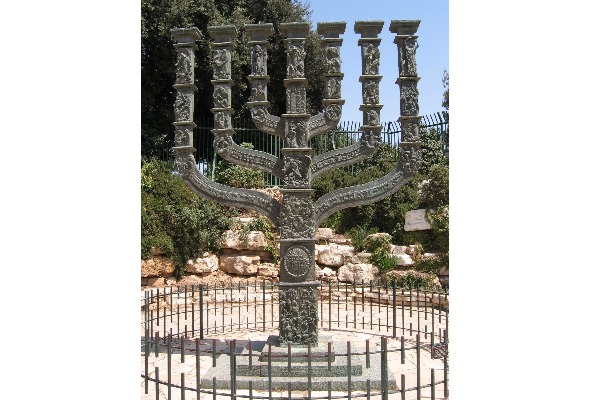Introduction: A Coin of Great Historical Value
The discovery of a Jewish coin minted in 37 BC, during the reign of King Herod the Great, offers a unique perspective on the cultural, political, and religious complexities of the late Second Temple period. More than just currency, this coin is a tangible symbol of Herod’s rule and the blending of Jewish traditions with Greco-Roman influences. It provides a valuable lens through which to examine the history of the Jewish people in this transformative era.

Design and Symbolism
The coin’s design is steeped in historical and political significance. Minted in Samaria, it features a helmet flanked by palm branches on the obverse, representing military victory and Herod’s triumph over the Hasmonean dynasty. On the reverse is a ceremonial tripod, a common symbol in Greek culture, used to signify authority and divine favor. Greek inscriptions, including “of King Herod,” underscore the ruler’s alignment with Roman customs and the broader Hellenistic world.

The choice of symbols and language demonstrates Herod’s dual role as a Jewish king and a Roman client ruler. While rooted in Jewish tradition, the coin reflects Herod’s efforts to legitimize his reign in a multicultural empire.
Cultural and Political Context
Herod’s reign was marked by a delicate balancing act between maintaining Jewish religious customs and aligning with Roman political expectations. His coinage represents this duality. Earlier Hasmonean coins prominently displayed religious motifs, such as the menorah, to affirm Jewish identity. Herod, however, adopted Greco-Roman motifs and inscriptions, likely to consolidate his power and appeal to Rome while subtly distancing himself from the Hasmonean legacy. This blending of elements showcases Herod’s strategic acumen and highlights the cultural interplay in Judea during this era.
Historical and Archaeological Insights
This coin serves as a critical piece of evidence in understanding the socio-political landscape of 1st-century BCE Judea. It reflects political propaganda by legitimizing Herod’s rule through imagery of military might and divine sanction. It also demonstrates Judea’s integration into the Roman economy, using symbols and language familiar to a broader audience. The incorporation of Greco-Roman elements reveals the region’s navigation of external influences while retaining its unique identity.
Legacy and Significance
The significance of this coin extends beyond its time. It highlights the enduring Jewish connection to the Land of Israel, evident through the region’s material culture. It underscores the complexities of governance and identity in a multicultural empire. The use of coinage as a tool for asserting authority and cultural messaging is evident. Today, such artifacts are invaluable to historians and archaeologists, providing a clearer picture of life and governance in ancient Judea.
Conclusion: A Bridge to the Past
The oldest known Jewish coin from 37 BC stands as a remarkable artifact, connecting us to an era of political intrigue and cultural fusion. Its intricate design and profound symbolism illuminate the challenges and achievements of King Herod’s rule, offering a glimpse into the enduring legacy of Jewish history in the Land of Israel. This coin, though small, carries the weight of a rich and complex past, bridging the gap between ancient civilizations and modern scholarship.
